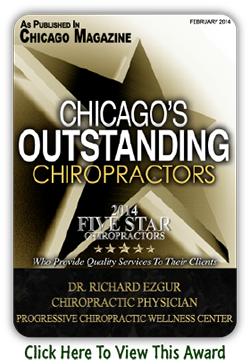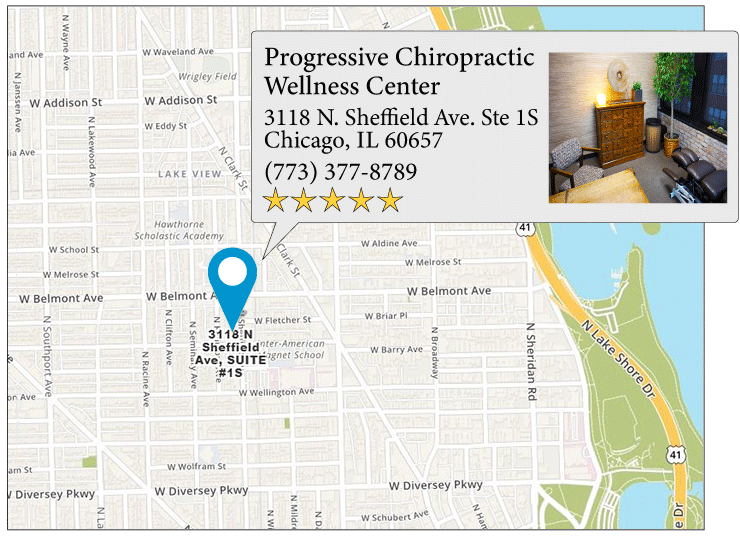Research Studies
- The prestigious New England Journal of Medicine published a study that stated that the number of visits to non-medical health care providers in 1990 totaled 425 million, 9.5% more than the total number of visits to all family physicians. A follow-up study conducted in 1997 found the total number of visits to non-medical health care providers jumped to 629 million. Chiropractic was the most-used treatment.
- Consumer preferences are also reflected in health care coverage. As of 1999, 65% of HMOs cover chiropractic care. When these HMOs were surveyed concerning their policies toward “alternative health care, " 43% stated that they DO NOT view chiropractic as “alternative therapy," but as a type of mainstream health care.
- Dr. Paul Shekelle, a medical doctor and member of the nonprofit RAND research organization states that chiropractic should be though of as an equivalent form of health care instead of an alternative therapy or other type of health care.
Numerous literature reviews and meta-analysies have been conducted concerning patient satisfaction, efficacy, and cost effectiveness of chiropractic care. Chiropractic care has been found to be effective in more than just low back and neck pain!
Acute Low-Back Pain- In 1994, the Agency for Health Care Policy and Research (AHCPR) published Clinical Practice Guideline14–Acute Low Back Problems in Adults. In the guideline, the acute low back pain was defined, treatments were evaluated, and recommendations regarding the efficacy of those treatments were discussed. Spinal manipulation proved to be one of the safest and most efficacious forms of treatment. It offers both pain relief and functional improvement. The AHCPR made history with its conclusion that “spinal manipulation hastens recovery from acute low back pain and recommends that this therapy be used in combination with or as an alternative to non-steroidal anti-inflammatories.”
- In 1992, the Annals of Internal Medicine published a review of literature conducted by medical doctors and chiropractic physicians at RAND and UCLA Schools of Medicine. This review of over 25 controlled studies and 9 meta-analysies addressed chiropractic treatment of low-back pain. The conclusion made was that “spinal manipulation hastens recovery form uncomplicated low-back pain.”
Chronic Low-Back Pain
- In 1997, three researchers funded by the Dutch Health Insurance Board in the Netherlands retrieved and evaluated 48 randomized controlled trials conducted worldwide concerning the treatment of both acute and chronic low-back pain.Evidence strongly suggests that spinal manipulation for chronic low-back pain can be rather effective.
General Low-Back Pain
- In 1999, Bronfort conducted a systematic review of literature concerning the efficacy of chiropractic for low-back pain. He found that spinal manipulative therapy has a short-term effect in cases of acute low-back pain.Compared with placebo and other commonly used therapies by general medical practitioners, spinal manipulation and mobilization are also effective for chronic low-back pain.
- A 1993 study by the Ontario Ministry of Health concluded that spinal manipulation is the most effective treatment for low-back pain. They also concluded that spinal manipulation is safer than medical management of low-back pain.
- The Foundation for Chiropractic Education and Research conducted a 1998 study of 10,652 workers’ mompensation cases in Florida. The study reported that back injuries treated by chiropractors were less likely to quire hospitalization or to develop compensable injuries (injuries resulting in lost time from work and thus compensation) than those who were treated by medical doctors or osteopaths.
- In 1990, T.W. Meade of the British Medical Journal reported that after two years of patient monitoring, “for patients with low-back pain in whom manipulation is not contraindicated, chiropractic almost certainly confers worthwhile, long-term benefit in comparison with hospital outpatient management.”
- Following a 1993 study, researchers at the Back Pain Clinic at the Royal University Hospital in Saskatchewan concluded that side posture adjustments for patients with lumbar intervertebral disc herniation is both safe and effective.
Headache Pain
- A 1997 study conducted by Blunt, Rajwani, and Guerriero concluded that chiropractic treatment of fibromyalgia resulted in the significant improvement in flexibility and a decrease in pain. The authors did, however, note that a multidisciplinary regime including chiropractic care for the treatment of fibromyalgia was recommended.
- In 1997, doctors in Denmark found manipulation to have a “significant positive effect” on intensity and duration of cervicogenic headaches compared to soft tissue therapy.
- A study comparing amitriptyline (pain medication) to manipulation in the treatment of tension headaches found manipulation rather successful. The manipulation group showed a 32% reduction in headache intensity, a 42% reduction in headache frequency, a 30% reduction in OTC (over-the-counter) medication usage, and a 16% improvement in general health status. The amitriptyline group showed no improvement or slight worsening of symptoms.
- In 1998, Mitchell, O’Sullivan, and Humphreys discovered the need for manual therapy of the muscles and ligaments of the neck post-MVA (motor vehicle accident) due to their attachment to the skull. Treatment of the damaged ligaments helped eliminate cervicogenic headaches.
Fibromyalgia
- A 1997 study conducted by Blunt, Rajwani, and Guerriero concluded that chiropractic treatment of fibromyalgia resulted in the significant improvement in flexibility and a decrease in pain. The authors did, however, note that a multidisciplinary regime including chiropractic care for the treatment of fibromyalgia was recommended.
Carpal Tunnel Syndrome
- Chiropractic treatment for carpal tunnel syndrome (CTS) was compared to nonsurgical medical treatment in a study preformed by Davis in 1998. The chiropractic group used wrist supports, manipulation and ultrasound; the medical group used ibuprofen and wrist supports. Both groups showed improvements; however, the authors noted that chiropractic treatment should be considered for those who are not able to tolerate ibuprofen.
Neck Pain
- A 1996 study conducted by RAND and several academic institutions conducted a review of literature on the treatment of neck pain. Manipulation was found more effective than mobilization or physical therapy in the treatment of subacute and chronic neck pain.
- Two randomized clinical trials were conducted in the Netherlands comparing the treatment of chronic back and neck complaints. Faster and greater improvement was shown in the spinal manipulation group compared to those receiving a placebo, physiotherapy, or treatment by a general practitioner.
- Verhoef, Page, and Waddell concluded in 1997 that “patients suffering from back and/or neck complaints experienced chiropractic care as an effective means of resolving or ameliorating pain” coupled with overall functional improvements.
Infantile Colic
- Klougart, Nilsson, and Jacobsen conducted a 1989 prospective study of 316 cases of infantile colic.The infants (average age of 5.7 weeks) all had moderate to severe colic but were otherwise healthy. The authors discovered that 94% of the infants appeared to be aided by chiropractic treatment “within 14 days from the start of treatment.” This improvement was manifested in both a reduction in both the length and number of colic periods which were not attributed to “the natural cessation of colic.”
- In 1999, Wilberg, Nordsteen, and Nilsson conducted a study on infantile colic. They found that spinal manipulation had a positive short-lived effect on infantile colic. The researchers also randomly placed infants in two groups for a two-week period of time: chiropractic treatment or dimethicone medication. Several dimethicone subjects dropped out of the study due to a worsening of symptoms. However, not only did the chiropractic study group retain all their subjects, but they also exhibited a “reduction of 67% on day 12″ of daily hours with colic. The dimethicone group only had a 38% reduction in daily hours with colic.
Rehabilitation
- Respected researchers Triano, McGregor, and Skogsberg wrote an opinion article in 1997 concerning the use of chiropractic manipulation in lumbar rehabilitation. Chiropractic care is “a valuable tool” that helps to ease patients into necessary rehabilitative procedures, relieve symptoms, and restore patients̵#8217; confidence in movement and flexibility. It also helps to prevent chronicity.
Evidence of the cost-effectiveness of chiropractic care is mixed due to the nature of the condition. However, most studies show that chiropractic is more cost effective than other treatment options.
- In 1996, Mosley, Cohen, and Arnold concluded that chiropractic care was substantially more cost-effective for back and neck pain than conventional care.
- A 1993 study by Stano compared the health care cost to 395,641 patients with neuromusculoskeletal conditions. Results from this two-year study demonstrated that the patients that received chiropractic care incurred much lower costs than those treated by medical doctors or osteopaths.
- The Journal of American Health Policy reported a 1992 review of over 2,000,000 users of chiropractic care. The report stated that chiropractic users tend to have “lower total health care costs…reducing the use of both physician and hospital care."
- A study of work-related back pain claims in Australia found that the percentage of cases managed by chiropractic was half that of cases managed by medical doctors. In addition, the likelihood of a patient going into a chronic state was three times more likely under medical management.
- A 1993 Canadian study reported chiropractors to be “more attentive and caring; more accessible, convenient and available; less reliant on drug therapy; and less likely to create new problems or make old problems worse."
- A 1993 study by Stano compared the health care cost to 395,641 patients with neuromusculoskeletal conditions. Results from this two-year study demonstrated that the patients that received chiropractic care incurred much lower costs than those treated by medical doctors or osteopaths.
- A 1998 landmark study reported that “virtually everyone treated by a chiropractor is satisfied with their care: 73% are ‘very satisfied’ and 23% are ‘somewhat satisfied’."
- The Western Journal of Medicine determined that medical patients had a higher rate of disability days (mean 39.7) compared to chiropractic patients (mean 10.8). In addition, the chiropractic patients that received care for low-back pain were three times more satisfied with their care (66%) compared to the medical patients (22%).
Links
- Illinois Chiorpractic SOciety (ICS)
- American Chiropractic Association
- NUHS- National University of Health Sciences (formerly the National College of Chiropractic)
- Illinois Homeopathic Medical Association
Recommended Reading List
- The Health Promoting Cookbook, by Alan Goldhamer, D.C.
- All books by Dr. Joel Fuhrman, including “Eat To Live", “The Pleasure Trap", and “Fasting & Eating For Health".
- Recipes by Dr. Andrew Weil
Professional Education and Licensing
Stringent academic standards must be met to become a licensed chiropractic physician. Currently an individual must complete the following four steps in order to become a licensed chiropractor:
- Complete two or more years of general college-level studies. A four-year bachelor’s degree is required for admission to The National College of Chiropractic, in Lombard, Illinois.
- Obtain a Doctor of Chiropractic (DC) degree and complete a clinical internship through an accredited four-year chiropractic college program.
- Pass the National Board of Chiropractic Examiners’ and/or other state-required examinations.
- Satisfy any other individual state-specific requirements for licensure.
- Complete continuing education requirements, including weekend seminars, to keep license current.
The Council on Chiropractic Education (CCE) and its Commission on Accreditation, as recognized by the US Department of Education, maintain high standards in chiropractic education. Additional postdoctoral training is also available through various councils and accredited colleges. Postgraduate programs can include the following: Acupuncture, Applied Chiropractic Sciences, Family Practice, Industrial Consulting, Neurology, Nutrition, Orthopedics, Pediatrics, Radiology, and Rehabilitation.
Requirements for chiropractic licensure vary from state to state. To assist the various agencies, the National Board of Chiropractic Examiners (NBCE) develops and administers exams. Scores from NBCE are made available to licensing agencies both throughout and outside the United States.
Please contact our office for more information about chiropractic or for a complete list of the research studies cited above.








